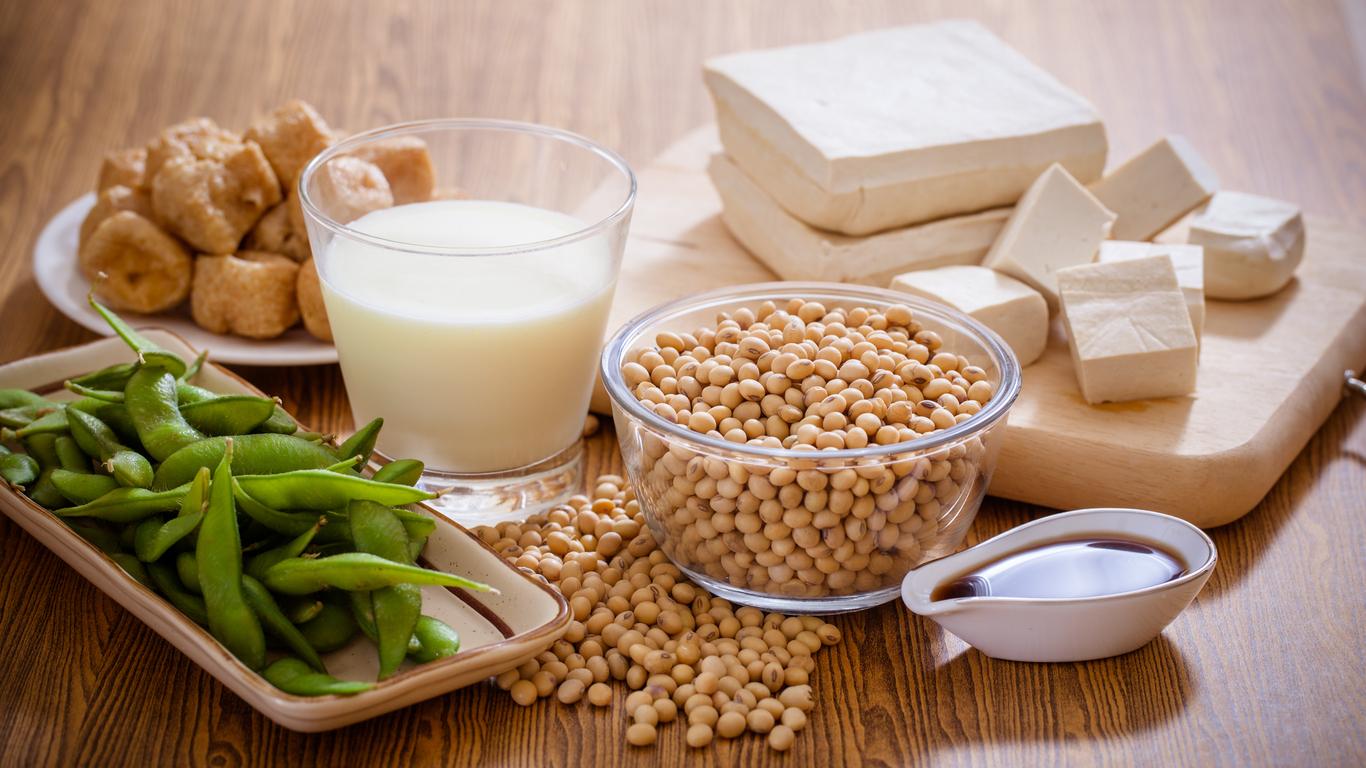
What do they do with menopausal symptoms?
In recent years you have heard more and more about the role of isoflavones in menopausal symptoms, osteoporosis and other health complaints. But what exactly are isoflavones? What are they in and how do they work? The most frequently asked questions about isoflavones.
What are isoflavones?
Isoflavones are plant substances that belong to the polyphenols. Isoflavones are found in legumes (especially soy), linseed and some other vegetables and grains. Red clover is also an important source of isoflavones. These isoflavones make phytoestrogens: genistein and daidzein. The word ‘phytoestrogens’ is a compound of the Greek phytos (= plant) and estrogens. They are therefore substances that are very similar to the female sex hormone oestrogen. However, the effect of isoflavones is much less powerful than that of the body’s own hormone estrogen (the effectiveness is about 1000 times lower).
What is known about isoflavones and the menopause?
During the menopause, the ovaries start to produce less estrogen and progesterone. This is often accompanied by unpleasant menopausal symptoms such as hot flashes and mood swings. In countries where people eat a lot of soy products, these transitional symptoms appear to occur less. Research has shown that soy reduces the severity of hot flashes by as much as 26 percent.
Soy is used for various foods. The best known of these is soy milk. Other soy products include tofu, miso, tempeh, soy sauce and soy sprouts. In addition, soy derivatives are used in many food products, especially in meat substitutes. Isoflavone supplements have been shown to have the same effect as dietary isoflavones, although some women benefit more than others. The genistein content seems to play a major role in this.
What is the relationship between isoflavones and osteoporosis?
Estrogen stabilizes and makes bone structure stronger. In fact, women’s own hormone production protects against osteoporosis. During and after the menopause, however, estrogen production is a lot lower than during the fertile period. A woman loses an average of 2 to 4 percent of bone tissue per year after menopause.
Scientific research seems to indicate that isoflavones can contribute to the maintenance of bone mass, due to their hormone-like effect. It is also important to eat enough calcium-rich products and products with vitamin D. Calcium strengthens the bones and vitamin D stimulates the absorption of calcium. Furthermore, movement is the most important.
What about security?
In principle, isoflavones are safe and the health benefits seem to outweigh the drawbacks. There are indications that phytoestrogen are not only beneficial for menopausal symptoms and osteoporosis, but also have a beneficial effect on cholesterol levels. More research is needed into the protective effect against cardiovascular disease after the menopause, in prostate cancer and dementia.
However, its use is controversial in the case of (increased risk of) hormone-sensitive cancers such as breast cancer. Contrastingly, the use of soy or isoflavones by women with no increased risk actually seems to reduce the risk of breast cancer. In the case of a (predisposition to) hormone-sensitive cancer, it is therefore wise to consult with a general practitioner or oncologist before taking isoflavones. It is also wise to consult your doctor if you have thyroid complaints. Isoflavones are on the one hand associated with a reduced risk of thyroid cancer, but isoflavones have also been observed to reduce the absorption of thyroid drugs.













